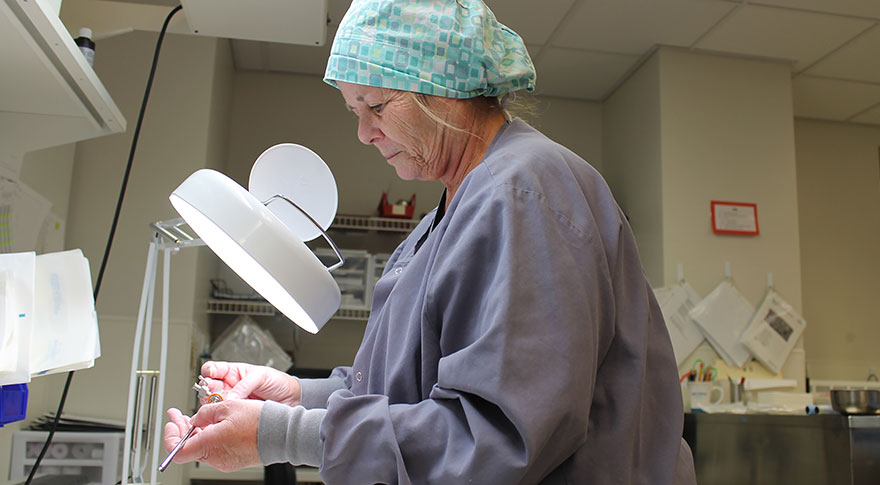Safety Behind the Scenes
- Winter 2018

As a part of the hospital expansion and renovation project, Brookings Health invested in a high-tech sterile processing area to increase instrument reprocessing efficiency. It also maintains and improves infection safety standards.
Sterile processing ensures instruments and equipment used in medical and surgical procedures are properly cleaned, disinfected, inspected and sterilized prior to patient use. It is essential for preventing infections, checking instrumentation functions well and ensuring all safety standards are met to deliver safe patient care.
“The new sterile processing department was designed for an efficient work flow from the OR surgical suite to decontamination, washing and disinfecting to packaging and sterilization and distribution to the OR, facility and clinics. We also have the latest sterilizing equipment,” said OR Central Sterile Reprocessing Supervisor Roxanne Johnson, CSPM.
The decontamination room is the first stop for soiled instruments from surgery and other areas of the health system. Here instruments and devices are fully cleaned in accordance with the Association for the Advancement of Medical Instrumentation standards to prepare them for the sterilization process.
Manually cleaned devices go through a three-bay sink process. First staff immerse instruments in an enzymatic solution to begin breaking down soils. In the second sink, instruments are immersed in a detergent solution and manually brushed. Finally, instruments are thoroughly rinsed with water supplied from a reverse osmosis system that removes impurities.
Mechanically cleaned instrumentation goes through an ultrasonic cleaner which forms air bubbles that implode on an instrument’s surface. The air bubbles reach small crevices and hard-to-reach surfaces.Once devices are cleaned, they are sent through two washer disinfectors. Instrument sets enter from the dirty, decontamination side and exit out clean on the sterilization side.
Before sterilization, staff reassemble and package instrument sets. Once packaged, the instruments are ready for sterilization. A main sterilization method is an autoclave, a device that uses steam to sterilize heat and moisture-stable items. For heat-sensitive devices, a hydrogen peroxide sterilization system is used. In this system, hydrogen peroxide vapor fills the sterilization chamber, contacting and sterilizing exposed surfaces.
At the end of the sterilization cycle, staff review the sterilizer printout to verify all sterilization parameters have been met. In addition, biological and chemical indicators monitor the sterilization process and indicate if the instruments were exposed to appropriate conditions to achieve sterility. These indicators help ensure instrumentation is sterile and safe to use.
Once staff have verified all sterilization parameters have been met, they re-distribute instrument sets for use in medical and surgical procedures in the hospital, clinics and The Neighborhoods at Brookview nursing home. Once used, the instruments will again be reprocessed by the sterile processing department.
Want to learn more about the quality care at Brookings Health System? Visit brookingshealth.org/Quality.

